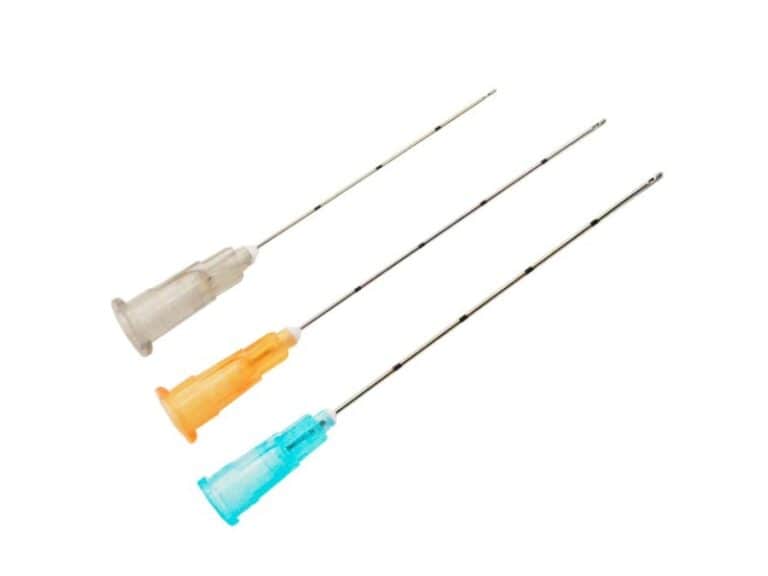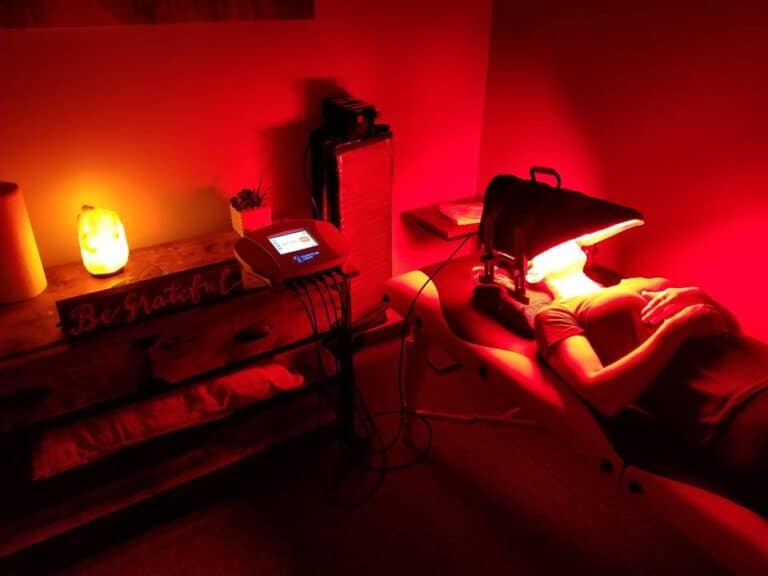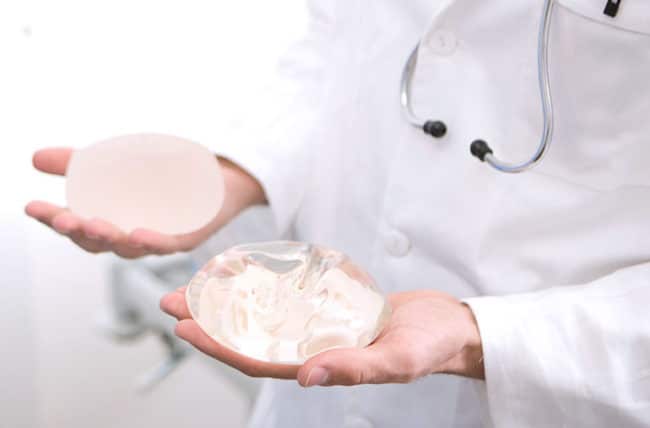Thread Lift vs. Fat Transfer: Which Procedure Is Best for You?
Fat transfer vs. thread lifts is a hot topic in the world of cosmetic procedures. Both methods aim to enhance your appearance but do so in different ways. Fat transfer involves taking fat from one part of your body and injecting it into areas like your face or breasts at a facial plastic clinic for cosmetic improvement, often alongside dermal fillers or a thread facelift. This technique has been around for decades, offering natural-looking results.
On the other hand, thread lifts are a newer option, using dissolvable threads to lift and tighten sagging skin. They provide an instant lift with minimal downtime. Understanding these two options, the thread facelift and thread lift, helps you choose the best fit for your needs and goals. Dive into this comparison to discover which method might be right for you.
Key Takeaways
- Fat transfer is a good option for those looking to add volume to areas like the face or breasts, while thread lifts are better for lifting sagging skin without adding volume.
- Consider your specific goals and the areas you want to treat when choosing between fat transfer and thread lifts.
- Ideal candidates for fat transfer are those with enough body fat to harvest, while thread lifts suit individuals with mild to moderate skin laxity.
- Both procedures have pros and cons; weigh the benefits of fat transfer’s natural results against the quick recovery of thread lifts.
- Recovery times vary: fat transfer may require more downtime compared to the minimal downtime associated with thread lifts.
- Results from fat transfer can last longer than those from thread lifts, which may need maintenance after a year.
Understanding Fat Transfer
Process Overview
Fat transfer, also known as fat grafting, is a cosmetic procedure. It involves two main steps: harvesting and injecting fat. Surgeons take fat from areas like the abdomen or thighs using liposuction, similar to a thread facelift. This method removes excess fat effectively.
After extraction, the fat undergoes purification. The surgeon prepares it for injection into the desired area for a thread facelift. Common target areas include the face and neck. This process enhances volume in these regions.
Dual Benefits
Fat transfer offers a dual benefit that many patients appreciate. First, it contours the donor site by removing unwanted fat through a thread facelift. Areas like the belly or thighs can appear slimmer after the procedure.
Second, the injected fat adds volume to places needing enhancement, much like a thread facelift. For instance, facial fat grafting helps restore youthful fullness to cheeks or lips. This combination makes fat transfer appealing for those seeking body sculpting and facial rejuvenation.
Natural Material
Using one’s own fat has advantages. The material is natural and biocompatible. This means the body recognizes it easily, reducing complications. Allergic reactions are less likely compared to synthetic fillers.
Patients often prefer this method for its safety profile. Since the body accepts its own tissue, recovery from a thread facelift tends to be smoother. Many report satisfaction with their results, enjoying a natural look without foreign substances.
Recovery and Results
Recovery from fat transfer varies by individual. Most people experience swelling or bruising at both the donor and injection sites after a thread facelift. These effects usually subside within a few weeks.
Final results of the thread facelift become visible over time as the swelling decreases. Many notice improved contouring and volume after about three months. The longevity of results can vary but typically lasts several years.
Ideal Candidates
Not everyone is a perfect candidate for fat transfer. Individuals with sufficient body fat are ideal for this thread facelift procedure. Those looking for subtle enhancements often benefit most.
Consultation with a qualified surgeon is crucial. They assess individual needs and discuss realistic expectations. This step ensures patients understand what to expect from their fat grafting experience.
Exploring Thread Lifts
Procedure Overview
Thread lifts use dissolvable sutures to lift and tighten sagging skin. This technique provides a lifting effect without the need for traditional surgery. The threads are inserted under the skin, where they create a supportive mesh. As the threads dissolve over time, they stimulate collagen production. This process enhances skin texture and firmness.
Minimally Invasive Benefits
The procedure is minimally invasive. It requires only local anesthesia and takes about 30 minutes to an hour. Patients can often return home the same day. Recovery time is quick, with many resuming normal activities within a few days. This makes thread lifts appealing to those seeking subtle lift effects without significant downtime.
Areas of Treatment
Thread lifts can be performed on various areas of the face and body. Common treatment areas include the neck, cheeks, and jawline. Butt thread lifts are also gaining popularity for enhancing contours in that area. The versatility of thread lifts allows for customization based on individual needs.
Collagen Stimulation
Threads not only provide immediate lifting effects but also promote long-term benefits. They stimulate collagen production in the skin. Increased collagen leads to improved elasticity and texture over time. Patients often notice smoother skin and reduced folds as the body heals.
Results Timeline
Results from a thread lift can be seen almost immediately after the procedure. However, full effects may take several weeks to develop as swelling decreases. The longevity of results varies but typically lasts between one to three years, depending on skin type and care.
Risks and Considerations
While generally safe, thread lifts do carry some risks. Possible side effects include swelling, bruising, or infection at insertion sites. Rarely, patients may experience visible threads or uneven results if not placed correctly. Consulting with a qualified professional is essential to minimize these risks.
Patient Experience
Many patients report satisfaction with their results from thread lifts. They appreciate the natural-looking improvements in sagging areas. The procedure offers subtle lift effects that enhance facial features without looking overdone. Positive experiences contribute to rising popularity among those considering non-surgical options.
Ideal Candidates for Each Procedure
Fat Transfer
Candidates for fat transfer typically seek volume enhancement. This procedure is popular among those wanting to improve specific areas like the face, breasts, or buttocks. Individuals with areas of excess fat can benefit from this technique. The process involves removing fat from one part of the body and injecting it into another.
Patients should be in good health before undergoing this cosmetic procedure. A consultation with a qualified healthcare professional is essential. This ensures that individual needs are met and that the patient understands the benefits and risks involved.
Age plays a role in candidacy as well. Younger patients may have more elastic skin, making them ideal candidates. However, older individuals can also benefit if they have enough healthy fat to transfer.
Thread Lifts
Thread lifts suit individuals with mild to moderate skin laxity. These patients do not require a full facelift but want to enhance their facial appearance. This procedure uses temporary sutures to lift and tighten the skin.
Those considering thread lifts often have specific goals in mind. They may want a subtle improvement rather than dramatic change. This option appeals to younger patients who show early signs of aging.
Skin condition affects candidacy for thread lifts. Healthy skin responds better to this cosmetic technique. Patients need a thorough evaluation by a qualified healthcare professional to determine if they meet the criteria.
Age and Skin Condition
Age and skin condition influence candidacy for both procedures. For fat transfer, younger individuals may achieve better results due to skin elasticity and overall health. Older patients can still qualify if they have sufficient fat stores and good skin quality.
In contrast, thread lifts generally attract younger patients looking for early intervention against aging. However, older adults with mild skin laxity also find success with this method.
A qualified healthcare professional assesses each patient’s unique situation. They consider age, skin quality, and desired outcomes before recommending either procedure.
Areas Treated with Thread Lifts
Facial Areas
Thread lifts effectively treat various facial areas. The brow is a common target. This procedure can raise sagging brows and create a more youthful appearance. Cheeks also benefit from this treatment. Thread lifts add volume and contour to the cheeks, enhancing facial definition.
The jawline is another key area. Thread lifts can tighten and define the jawline, reducing the appearance of jowls. Patients often notice improved skin texture and firmness in these regions. This non-surgical option appeals to those seeking alternatives to traditional facelift surgery.
Neck and Décolletage
Thread lifts extend beyond the face. They treat the neck and décolletage effectively. Loose skin in these areas can be tightened using threads. Many patients appreciate the subtle lift and rejuvenation achieved here. The neck often shows signs of aging early, making it an important area for treatment.
The décolletage area also benefits from thread lifts. This region frequently experiences wrinkles and sagging skin due to sun exposure. Using threads helps improve skin elasticity and smooth out fine lines.
Versatility of Treatments
Versatility defines thread lifts as a cosmetic treatment option. They address multiple concerns simultaneously. For instance, a patient may seek to lift the brow while also tightening the jawline. This multi-target approach saves time and reduces recovery periods compared to surgical facelifts.
Patients often combine thread lifts with other treatments for enhanced results. Botox injections or dermal fillers can complement the effects of thread lifts. This combination creates a more comprehensive rejuvenation strategy.
Many patients prefer this approach over traditional facelift procedures. Traditional facelift surgery requires longer recovery times and involves more risks. In contrast, thread lifts allow for quicker return to daily activities.

Comparing Non-Surgical Options
Thread Lifts
Thread lifts use surgical sutures to lift and tighten the skin. This method involves inserting threads under the skin. The threads create a supportive structure that helps elevate sagging areas.
This technique offers immediate results. Patients often notice a lifted appearance right after the procedure. Thread lifts also stimulate collagen production over time. This can improve skin texture and elasticity.
Fillers and Botox
Fillers and Botox are different from thread lifts. Fillers add volume to specific areas, like cheeks or lips. They work by injecting substances such as hyaluronic acid into the skin. This approach is effective for wrinkles and volume loss.
Botox, on the other hand, relaxes muscles to reduce fine lines. It targets dynamic wrinkles caused by facial expressions. While fillers and Botox offer quick results, they do not provide lifting benefits like thread lifts.
Comprehensive Benefits
Thread lifts provide comprehensive lifting and tightening benefits. They target multiple areas of the face at once. This contrasts with fillers, which focus on specific spots. Patients seeking overall rejuvenation may find thread lifts an excellent option.
The combination of lifting and collagen stimulation sets thread lifts apart from other treatments. Many people desire a more youthful appearance without undergoing surgery.
Longevity of Results
Results from thread lifts generally last longer than those from fillers or Botox. While fillers typically last six to twelve months, thread lift effects can last up to two years. This extended duration makes thread lifts a more appealing surgical alternative for some patients.
Natural appearance is another key factor in choosing between treatments. Thread lifts create subtle changes that enhance one’s features without looking artificial. In contrast, fillers can sometimes lead to a more noticeable change in appearance.
Consultation Importance
A consultation is essential before deciding on any treatment option. During this meeting, patients can discuss their goals with a qualified professional. The expert can recommend the best options based on individual needs.
Understanding each treatment’s mechanism helps patients make informed decisions. Knowing how long results last and what to expect is crucial for satisfaction.
Pros and Cons of Each Method
Advantages of Fat Transfer
Fat transfer offers several advantages. It uses the patient’s own body fat, leading to natural results. This method enhances volume in areas like the face and chin. The body accepts this fat well, reducing the risk of rejection.
Another benefit is the dual nature of the procedure. Liposuction removes excess fat from one area. This can improve body contours while adding volume to another. Many patients appreciate this aspect. They not only gain a youthful appearance but also achieve a slimmer figure.
Downsides of Fat Transfer
While fat transfer has benefits, it also has downsides. One major concern is the variability in fat survival rates. Not all transferred fat will survive long-term. Factors like technique and individual healing affect outcomes. Some patients may need multiple sessions to achieve desired results.
Fat transfer procedures can also take longer than other methods. Recovery time varies among individuals. Patients may experience swelling and bruising post-surgery. These factors can delay seeing final results.
Benefits of Thread Lifts
Thread lifts present their own set of benefits. They require minimal downtime compared to surgical options. Many patients return to regular activities within days. This makes thread lifts appealing for busy individuals.
Another advantage is the immediate lift effect. Threads provide instant tightening of the skin, improving signs like marionette lines and sagging cheeks. Results can last up to 18 months, which is significant for a non-surgical option.
Limitations of Thread Lifts
However, thread lifts have limitations as well. The results are temporary and not as dramatic as surgical procedures. Patients may need follow-up treatments to maintain their appearance.
Specific concerns include potential risks associated with threads breaking or becoming visible under the skin. These issues can lead to dissatisfaction with results. Patients should discuss these possibilities before deciding on a thread lift.
Summary
Both fat transfer and thread lifts offer unique advantages and risks. Fat transfer provides natural-looking results with additional volume benefits but has variable fat survival rates. Thread lifts offer quick recovery and immediate lifting effects but result in temporary changes.
Patients must weigh these pros and cons carefully before choosing a method that aligns with their needs and expectations.
Recovery and Downtime
Fat Transfer
Recovery from fat transfer can vary. Patients often experience swelling and bruising at both the donor and recipient sites. This is normal and usually peaks within the first week. The body needs time to heal, which can take a few weeks.
During the recovery phase, it’s essential to rest. Most people require about two weeks of downtime before returning to strenuous activities. Light exercise may be possible sooner, but caution is advised. Full recovery can take several months as the body adjusts to the transferred fat.
The appearance of the treated areas improves gradually. Initial swelling may obscure results. As swelling goes down, patients can see their final outcomes. Some may notice unevenness during this time, but this typically resolves as healing progresses.
Thread Lifts
Thread lifts offer a quicker recovery process. Many patients return to normal activities within just a few days. This procedure involves minimal downtime, making it appealing for those with busy schedules.
After a thread lift, some mild swelling or bruising may occur at the insertion points. However, these side effects are generally less severe compared to fat transfer. Most people feel comfortable resuming daily routines shortly after the procedure.
Patients appreciate this quick recovery. They can enjoy improved facial contours without a long wait. Results appear almost immediately after the threads are placed. Over time, collagen production increases, further enhancing the skin’s appearance.
Comparison of Downtime
Comparing recovery times reveals significant differences between these two methods. Fat transfer involves more extensive downtime due to its invasive nature. In contrast, thread lifts require less recovery time and allow for a faster return to daily life.
Fat transfer requires careful management of both donor and recipient sites. Swelling can last longer, affecting overall comfort. Thread lifts, being less invasive, typically cause fewer complications and quicker healing.
Patients often choose thread lifts for their minimal downtime. Those seeking immediate results with less disruption in their lives find this option attractive. Fat transfer may offer longer-lasting results but demands more patience during recovery.
Longevity of Results
Fat Transfer Effects
Fat transfer offers lasting results. Once the fat is transferred, it needs time to establish a blood supply. This process can take several weeks. After this period, the results become more stable. The body may absorb some of the fat, but a significant portion remains permanent. Patients often enjoy a youthful appearance for many years after the procedure.
Fat transfer also boosts collagen production. This natural process helps improve skin texture and elasticity over time. As a result, individuals may notice fewer fine lines and a smoother complexion. The longevity of these effects varies by individual but generally outlasts many non-surgical options.
Thread Lift Duration
Thread lifts provide a different experience. The results are temporary, typically lasting around 12 to 18 months. Threads dissolve gradually in the body, leading to a slow decrease in firmness and lift. Many people appreciate the immediate improvement after the procedure, but they should prepare for eventual changes.
As the threads dissolve, facial aging continues. Fine lines and sagging may return as collagen production decreases with age. Regular maintenance treatments are often necessary to sustain results. This can lead to ongoing costs and commitments that some patients find challenging.
Comparing Sustainability
The sustainability of results between fat transfer and thread lifts differs significantly. Fat transfer tends to offer more permanent outcomes once established. However, individual factors play a crucial role in this comparison.
Lifestyle choices impact both procedures’ effectiveness. Factors like diet, exercise, and sun exposure can affect collagen levels and skin health. Aging also contributes to changes in skin quality over time. While fat transfer provides longer-lasting volume, thread lifts require more frequent touch-ups.
Patients should consider their goals when choosing between these options. Those seeking long-term improvements might lean toward fat transfer. Others who prefer less invasive methods may opt for thread lifts despite their shorter duration.
Ultimately, understanding the differences in longevity can help individuals make informed choices about their cosmetic goals. Each option has its benefits and limitations based on personal preferences and lifestyle.
Pensamientos Finales
Choosing between fat transfer and thread lifts can feel overwhelming. Both options offer unique benefits and cater to different needs. Fat transfer provides natural volume, while thread lifts offer a quick lift with minimal downtime. Understanding your goals is key to making the right choice for your skin and lifestyle.
Ultimately, it’s about what works best for you. Consult with a qualified professional to discuss your options thoroughly. Your journey to enhanced beauty starts with informed decisions. Don’t hesitate—take the next step towards achieving your desired look today!
Frequently Asked Questions
What is fat transfer?
Fat transfer is a cosmetic procedure that involves removing fat from one area of the body and injecting it into another. It enhances volume in areas like the face, breasts, or buttocks.
How do thread lifts work?
Thread lifts use absorbable sutures to lift and tighten sagging skin. The threads create a scaffold that supports the skin while stimulating collagen production for improved texture.
Who is an ideal candidate for fat transfer?
Ideal candidates for fat transfer are those with sufficient body fat and realistic expectations. They should be in good health and looking for natural-looking enhancements.
Are thread lifts suitable for everyone?
Not everyone is a candidate for thread lifts. Ideal candidates are typically individuals with mild to moderate sagging skin who desire non-surgical lifting without extensive downtime.
How long do results last for each procedure?
Fat transfer results can last several months to years, depending on factors like metabolism. Thread lift results usually last about 6 months to 2 years, depending on the type of threads used.
What are the main benefits of fat transfer?
Fat transfer provides natural-looking results, improves volume, and can enhance multiple areas simultaneously. It uses your own body tissue, reducing the risk of allergic reactions.
Is there much downtime after these procedures?
Fat transfer may require a few days of recovery due to swelling or bruising. Thread lifts typically involve minimal downtime, with many patients returning to normal activities within a day or two.






